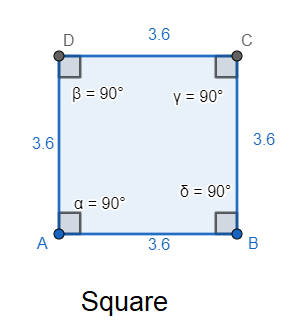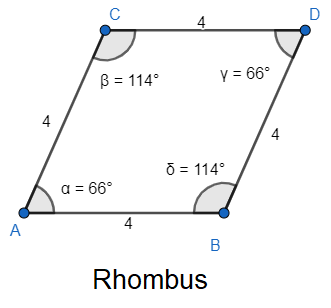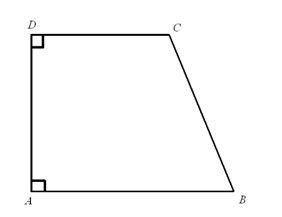
What is a quadrilateral that has exactly 2 congruent consecutive sides? Would it be either a parallelogram and/or a trapezoid?
Answer
514.5k+ views
Hint: We first explain the concept of congruent consecutive sides. Then we take the given options individually and explain if they satisfy the conditions. We give proper reasons against every form of quadrilateral.
Complete step by step solution:
A parallelogram can be defined in the form of a quadrilateral which has its opposite sides parallel or equal or both. It has no particular condition of consecutive sides being congruent to each other. If the consecutive sides of parallelogram are equal then it becomes a particular form of parallelogram which is rhombus. Since a square, a rhombus and a rectangle are also parallelograms, they are also excluded.


In a trapezoid if the bases are congruent to one and only one of the adjacent sides then the condition is satisfied. We are excluding the concept of isosceles trapezoid.


In the case of trapezium, for the basic restrictions of a generic quadrilateral, it is possible to make two consecutive sides congruent to each other and make the two other sides different from each other and of the first two sides. So, for such a special kind of trapezium, the condition is satisfied.

Note: The concept of congruent and regular is different. The concept of irregular quadrilateral comes from congruent sides and angles being not equal. This is different from being congruent.
Complete step by step solution:
A parallelogram can be defined in the form of a quadrilateral which has its opposite sides parallel or equal or both. It has no particular condition of consecutive sides being congruent to each other. If the consecutive sides of parallelogram are equal then it becomes a particular form of parallelogram which is rhombus. Since a square, a rhombus and a rectangle are also parallelograms, they are also excluded.


In a trapezoid if the bases are congruent to one and only one of the adjacent sides then the condition is satisfied. We are excluding the concept of isosceles trapezoid.


In the case of trapezium, for the basic restrictions of a generic quadrilateral, it is possible to make two consecutive sides congruent to each other and make the two other sides different from each other and of the first two sides. So, for such a special kind of trapezium, the condition is satisfied.

Note: The concept of congruent and regular is different. The concept of irregular quadrilateral comes from congruent sides and angles being not equal. This is different from being congruent.
Recently Updated Pages
Master Class 8 Social Science: Engaging Questions & Answers for Success

Master Class 8 Maths: Engaging Questions & Answers for Success

Master Class 8 Science: Engaging Questions & Answers for Success

Class 8 Question and Answer - Your Ultimate Solutions Guide

Master Class 8 English: Engaging Questions & Answers for Success

Master Class 11 Economics: Engaging Questions & Answers for Success

Trending doubts
What is BLO What is the full form of BLO class 8 social science CBSE

Citizens of India can vote at the age of A 18 years class 8 social science CBSE

Full form of STD, ISD and PCO

Right to vote is a AFundamental Right BFundamental class 8 social science CBSE

Summary of the poem Where the Mind is Without Fear class 8 english CBSE

What are gulf countries and why they are called Gulf class 8 social science CBSE




